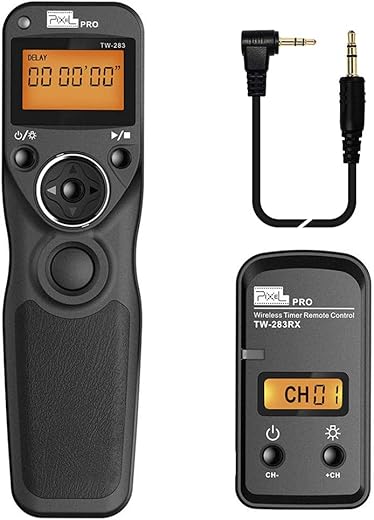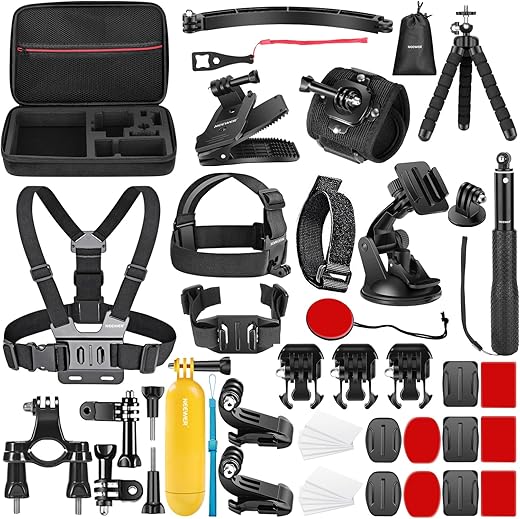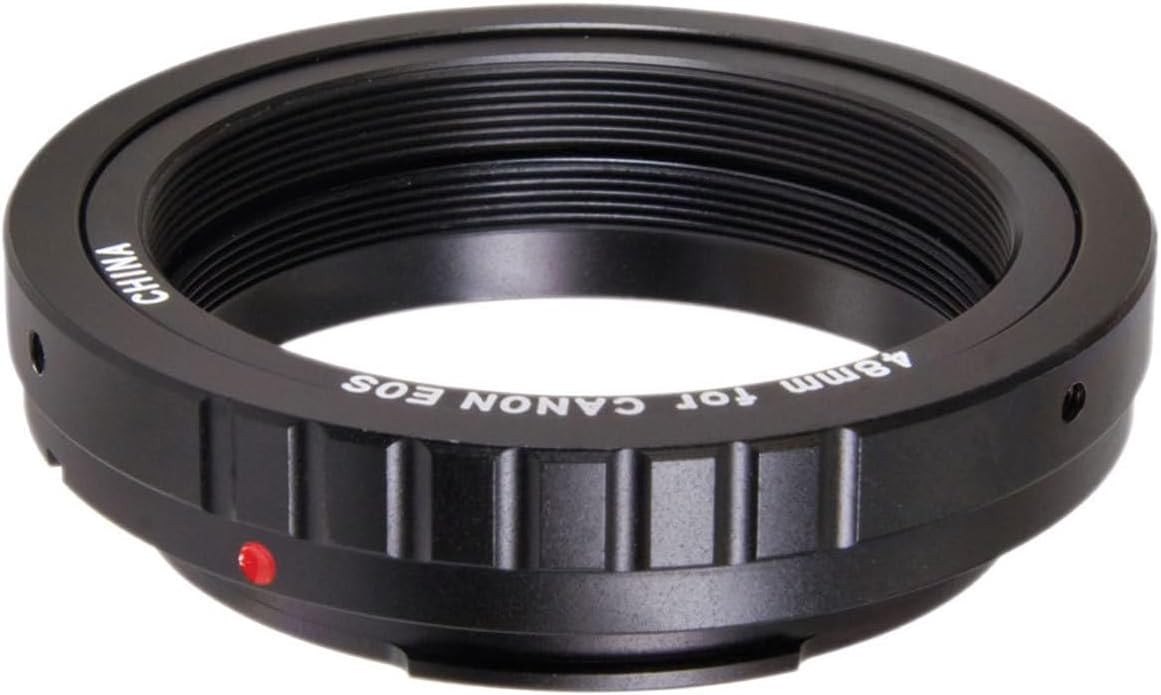
4-Step Guide to Pinpoint Finderscope Alignment
Why Pinpoint Finderscope Alignment Matters
Aligning your finderscope precisely saves time and frustration. This four-step guide helps beginners and experienced observers reduce framing errors, speed target acquisition, and start observing confidently each night with sharper, more enjoyable sessions every time.
What You’ll Need
Align Your Finder in 40 Seconds: Quick
Step 1 — Secure and Roughly Align During Daylight
Why daytime alignment will save you hours under the stars — and it’s easier than you think.Mount the finderscope snugly into its bracket. Tighten the thumbscrews just enough to hold it without overclamping — you want it stable but adjustable.
Park the telescope on a stable tripod or pier and level the mount. Point the main scope at a distant terrestrial object at least several hundred meters away (a roofline, radio antenna, or church steeple works well).
Use the telescope’s slow‑motion controls or hand paddle to center that target in the main eyepiece. Focus the main scope until the image is crisp.
Look through the finderscope and note the crosshair position relative to the same target. If it’s way off, make only gross adjustments to the bracket screws so the view moves toward the target.
Important reminders:
Recheck and repeat until the finderscope’s view roughly matches the main scope. Make only gross adjustments to bracket alignment and recheck until the finderscope’s view roughly matches the main scope before fine-tuning at night. Take notes about screw turns for repeatable, quicker future setups.
Step 2 — Nighttime Coarse Alignment with a Bright Target
Want instant star-hopping success? Start with Jupiter or the Moon.Perform the first night alignment on a bright, easy-to-find object (Jupiter, Sirius, or the Moon). Allow the telescope to cool to ambient temperature so focus and pointing remain stable. Polar align or set the mount to a known home position if your mount supports it—consistency matters.
Center the chosen target in the main eyepiece at medium power and adjust focus until the image is sharp. Check the finderscope reticle while the main image stays centered.
Use the bracket adjustment screws or thin shims to move the finderscope so its crosshair aligns with the main image. Work slowly and make only small turns; recheck the eyepiece after each tweak.
Switch repeatedly between the finderscope and eyepiece to confirm alignment remains. When both views stay centered after small nudges, tighten the mounting screws carefully and verify again. Record screw positions or marks to speed future setups. If your finderscope has adjustable optics, consult the manual before forcing adjustments.
Step 3 — Fine-Tune Across the Sky for True Accuracy
One alignment is never enough — test different sky positions to catch hidden errors.Fine-tune alignment by testing multiple field positions and using higher magnification. Pick a dimmer star or a small double star (e.g., Albireo or Epsilon Lyrae) and center it in the main eyepiece at medium–high power.
Place the target near one edge of the eyepiece field, then use the slow controls to re-center it. Check whether the finderscope crosshair still points to the same object. Repeat this at different sky positions to reveal mechanical flexure:
If you see systematic offsets, loosen the finderscope mount slightly and adjust one screw at a time. Track which screw moves the reticle directionally (e.g., clockwise moves image left). Re-tighten screws gradually and recheck after each turn. For equatorial mounts, slew to two widely separated stars and verify consistency.
Final verification: slew to a faint target and center it using only the finderscope; if successful, save notes and photos of screw positions/marks for future setups.
Step 4 — Troubleshoot, Lock, and Save Settings
Stop losing nights to tiny screws — simple fixes that prevent disaster and speed setups.Inspect the bracket and mounting plate for play or warped hardware. Wiggle the assembly after tightening to feel movement; replace stripped screws and tighten with the correct-size drivers.
Add thin felt or rubber shims between mating surfaces to remove wobble. Example: slide a 0.5 mm felt strip under the mount foot, re-tighten, then re-check drift.
Clean the reticle and optics gently: use a hand blower to remove dust, then a lens tissue for stubborn spots; never touch glass with fingers.
Confirm the eyepiece is fully seated and the focuser drawtube has no slop to cure persistent parallax. Press the eyepiece in and watch for star shift as you focus.
Consider upgrading to a right-angle or illuminated finder for easier night aiming. Practice quick daytime alignments to build muscle memory before sessions. Photograph bracket positions or mark them with a permanent marker in unobtrusive spots so you can return to known settings.
Carry a small toolkit and spares (screws, washers, Allen keys) to the field – the smallest parts often ruin a night if forgotten.
Final Tips for Consistent Pointing
With these four steps you’ll convert guesswork into reliable, repeatable finderscope alignment. Invest time in setup, keep notes, and your telescope will point faster and more confidently—ready to make observing sessions smoother and more fun?









My first attempt: followed Steps 1–4. Result: success-ish. Centered on Jupiter with the main scope, but the finders still felt off when I slewed to Saturn.
Is there a recommended order for locking screws so you don’t introduce tilt when tightening?
Great question. Tighten screws in small, alternating increments (like a star pattern). Avoid fully tightening one screw before the others — that can tilt the bracket. Also re-check alignment after final tightening.
Also consider using a torque-limiting driver if you have one; consistent torque helps prevent drift.
I do quarter turns on each screw in sequence until firm. Works well.
Great guide — finally something that explains the basics without assuming I already speak telescope.
I followed Step 1 during daylight and it helped a lot. Quick question: when you say “roughly align,” how far off is too far for daylight? I ended up maybe a couple of degrees off and it still seemed okay at night.
Also, any tips for using a cheap red dot finderscope in place of a pinpoint one?
I had the same question — I align to a chimney top during the day, then to Vega at night. Works well. Cheap red dots can be finicky but you’ll get there with patience.
If you’re a little off, don’t sweat it. Step 3 (fine-tune across the sky) fixes the remaining error. But if the dot shifts when the OTA is pointed down, check the mount screws.
A couple of degrees is fine for the daylight rough alignment — that’s what Step 2 is for. If your red dot is adjustable like a finderscope, treat it the same way: coarse align during day, then fine-tune on bright stars at night. The main difference is magnification; pinpoint finders help with centering at low power.
I tried the guide last weekend. After Step 2 I still had a 10 arc-minute offset at high magnification — any ideas?
I checked collimation and it’s fine. The finderscope body wobbles slightly when I touch it though.
You might also try re-running Step 3 with multiple reference stars to average out mount flexure effects.
Yep, I had that once. Replaced a loose screw and it fixed the 10′ offset immediately.
If the finderscope body moves when touched, that’s a mechanical issue — tighten the mounting hardware and check for play in the dovetail. That wobble will translate to significant error at high mag. Also verify the finderscope base itself isn’t cracked or loose.
Quick question: for Step 2 “bright target” do you recommend a planet (Jupiter) or a star (Sirius)? I live in a city with light pollution but can still see bright planets.
If you have a planet, use it. Planets also help you tell if focus is off since they have a disk.
Either works. Planets are great because they’re bright and obvious; stars like Sirius are point sources which can be easier to center precisely. In light-polluted skies, use whatever is brightest and easiest to identify.
I use Venus when visible — bright and easy to spot even in the city.
Constructive feedback: the guide is excellent but the section on “true accuracy” (Step 3) could use more detail on how atmospheric refraction affects alignment near the horizon. I had weird drift until I started using targets higher in the sky.
Good point. We’ll expand Step 3 to mention refraction and recommend using targets at least 30 degrees above the horizon when doing fine alignment. Thanks!
Agree — I now pick stars near the meridian and at decent altitude for final checks.
Yep, low altitude targets are tricky. Also avoid doing fine-tune when your scope is cooling; thermal currents can mislead you.
Lol I read “secure and roughly align during daylight” and thought, “Sure, I’ll align in daylight — what could go wrong?” Then I forgot and did it at dusk. 😅 Still mostly worked though.
One thing I loved: the final tips on consistent pointing. Putting a little ritual into setup helped my whole observing session go smoother.
Same — I make coffee, check weather, then do the alignment steps. Keeps me focused and makes sure nothing is forgotten.
A ritual helps! Many experienced observers have a checklist — power on, counterweights, rough align, check finders, then star-hop. Glad the tips helped.
Thanks for breaking this down. Step 3 saved me — aligning across the sky made the scope point where I thought it would.
One tiny gripe: wish there was a picture for the “locking” bit in Step 4. I accidentally over-tightened a clamp and then had to loosen it again. 😅
Same here. Learned the hard way to avoid wrenching those knobs. A gentle touch is all you need.
Good note — we’ll add a photo of the locking hardware in the next update. For now, tighten just enough to hold the alignment; use fingertip tension and then a small nudge with the tool if needed.
Minor nit: the troubleshooting section mentions “backlash” but doesn’t explain how to detect it in a finderscope setup. I had to Google a bit. Maybe add a simple test?
Also check both axes separately — sometimes RA is fine but DEC has slack. Small movements can reveal it.
Good catch. We’ll add a brief test: nudge the mount in one direction, then reverse and see if the finderscope lags before responding. If it does, that’s backlash. Also include checks for gear mesh and clutches.
Wanted to share a silly story: tried to align using a distant airplane light (brilliant idea? not really). It moved, obviously. 😂 Ended up using a church steeple and then bright star. Lesson learned.
I once used a lighthouse beam and that was a game of patience. Moving targets are such a trap!
Try a rooftop vent or tall tree — aircraft are a no-go unless you enjoy frustration.
Hah — moving targets are the worst. Stationary landmarks or bright stars are the reliable choices. Plane chase is an extreme sport though.
Airplanes: 0, telescopes: 1. 😂
A long one — hope that’s okay:
I came from astrophotography, where precise framing matters. I used this guide to align my red-dot finderscope to a guidescope for framing deep-sky targets. Steps 2 and 3 were super helpful for getting repeatable framing across nights. My notes:
– During Step 1 I make sure the OTA is at the same orientation I’ll use for imaging.
– For Step 3 I pick stars across RA and DEC, not just along one line.
– Step 4: I use loctite on non-moving screws (very sparingly) to keep things steady between sessions.
Thanks for the detailed walk-through — it improved my imaging sessions by cutting setup time in half.
Careful with loctite — low-strength variants are best so you can still disassemble if needed.
Totally stealing the “match OTA orientation” tip for my next session. Makes sense for consistent framing.
Fantastic detailed share, Zoe. Imaging workflows benefit a lot from repeatability — your points on matching OTA orientation and choosing stars across both axes are exactly the kind of practical advice many miss.
This is so helpful. I wish there was a quick checklist printable version though — one sheet with the four steps and a small troubleshooting table.
Anyone made one they can share?
Good idea — I’ll add a printable checklist PDF to the article soon. Meanwhile, try copying the step headings into a note app to create your own quick checklist.
I made a tiny laminated card for my case with the 4 steps and a short troubleshooting list. PM me and I’ll upload a photo.
Short and sweet: this worked. I was that person circling Polaris for 20 minutes before reading this. The troubleshooting checklist in Step 4 is actually gold.
Pro tip from me: label your screws or take a quick photo before you start, so you know what “stock” position is if you fiddle with them.
Thanks Hannah — love the photo idea. Many users don’t realize how useful a quick before/after pic can be when troubleshooting.
Polaris is a great anchor for northern observers. For folks in the southern hemisphere, try aligning to a bright planet instead.
Agreed. I use little colored tape dots on knobs. Cheap but effective.
Ha, alignment used to feel like magic. Now it’s more like controlled chaos. This guide demystified the process.
Two tiny practical things I do: mark the finderscope base position with a Sharpie (hidden spot) after final alignment, and bring a small spirit level for the OTA when mounting. Both reduced headaches for me.
Marked positions ftw. Saved me on a field trip when we dismantled and reassembled quickly.
Nice practical tips — marking the base is a clever trick. The spirit level idea helps with repeatability, especially on portable mounts.
I keep a tiny bubble level permanently attached — saves time. Also, if you rotate the scope, re-check the marked position; sometimes the base moves.
Appreciate the troubleshooting flowchart idea in Step 4. One thing I struggled with: how often should you re-check alignment? Every night? Every time you move the scope?
I check once after setup, and again after the first target. If nothing shifted, I leave it.
Good question. Re-check whenever you reassemble or move the optical tube or finderscope. If everything stays put, a quick verification once per session is usually enough. For imaging, check before important frames. If you transport the scope, always re-check alignment.
For multi-night imaging runs, I check alignment each night — small shifts can accumulate and affect framing.